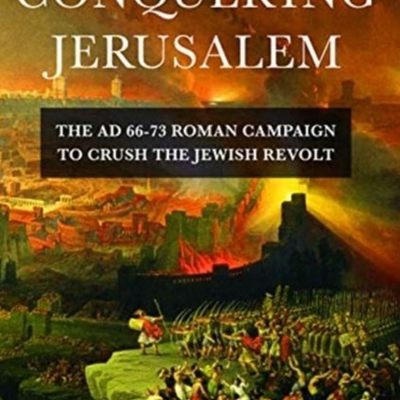The book “Conquering Jerusalem” by Stephen Dando-Collins is about the Jewish war in the years 66-73 CE. The author decided to focus on the events of one of the greatest revolts that broke out in the Roman Empire.
As Stephen Dano-Collins himself points out in the introduction, he has so far written several books that dealt with the events of Judea in the years 66-73 CE. However, he decided to devote the entire title to the First Jewish War, and its main source of information was Josephus.
Josephus was born into a respected Jewish family that gave birth to more priests of Judaism. The growing agitation and dissatisfaction with the presence of the Romans in Jewish society led to the outbreak of an uprising that was to ensure independence and drive out the Roman legions. Josephus joined the war and distinguished himself with bravery. Ultimately, however, he was captured by the Romans in 67 CE, when he commanded the defence of the Jotapata fortress. From that moment on, he was associated with the Roman side and accompanied Vespasian and Titus in suppressing the rebellion. Direct presence in the hostilities allows us to consider him the most important source of information about these events.
The book begins with a description of the insidious conquest of Masada by the Sicarii – a radical faction of the Zealots who demanded independence for their people. In the following nineteenth chapters the author describes the further fate of the uprising, the rivalry for power among the Jews, the troubles of the Romans with Judea under the rule of Florus, and then the intervention of legate Gallus, and finally the assumption of command by Vespasian and the suppression of the rebellion by Titus. The description of the events ends with the capture of Jerusalem.
In my opinion, the book lacks the greater genesis of the reluctance of Jews towards the Romans and the relationship between both peoples/states. Moreover, the author should have finished the book with a description of the conquest of Masada by the Romans – to this day, an embankment for siege towers made by the Romans is visible at the hill, which only shows us what siege works were capable of the Romans. In addition to the disadvantages of the item, I can include the footnotes at the end of the book. I always say that it is much more convenient to follow additional information on the topic at the bottom of the page – it makes life easier for the reader.
At the end of the book, we can find an extensive bibliography with items used by the author that can be used by the reader to further explore their knowledge.
The book was published by Turner Publishing. I cannot comment on the quality of the edition as I received an e-book for review; I must admit, however, that it was very pleasant to read, the letters are very clear and the cover is very nice. Also, for my part, I can express myself positively about the e-book. Unfortunately, my electronic version of the book did not show the maps and graphics at the beginning of the book; however, they are certainly the added value of the item.
In summary, the book is a very solid account of the political events in the Empire during the years 66-73 CE, focusing primarily on the Jewish uprising. The reader receives a large amount of information about relations between Romans and Jews, as well as about battles and sieges. The author avoids broader discussions or attempts to undermine the sources, and his description largely imitates the messages of Josephus from “The Jewish War”.
Despite some shortcomings, the book is a very interesting proposition to learn about the events described.


